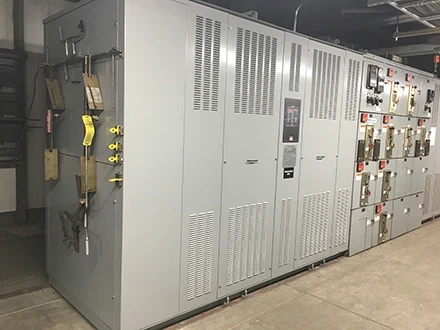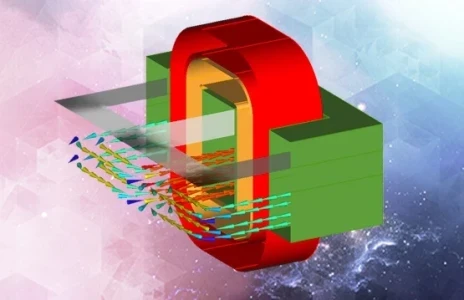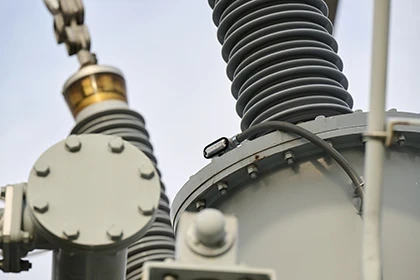Transformer Testing & Maintenance
Navigating the Transformer Supply Crunch: Strategies for Utilities Amidst Global Shortages
Transmission Construction Industry Leader Retires and Sells at Absolute Auction!
Transformer Testing & Maintenance

Power Utility Replaces Aging Transformers with Customized, Drop-in Units
As aging transformers at generation facilities near end-of-life cycles, a number of potentially dangerous events can come into play when it comes to aging transformers – in addition to untimely power outages and costly repairs.
Because many transformers are exposed to dust and high operating temperatures, over time they incur such problems as clogged air inlets, clogged cooling ducts, and deterioration of winding insulation, all of which can degrade capacity. If a transformer is operating...
Related Articles

Transmission Construction Industry Leader Retires and Sells at Absolute Auction!
S.E., Inc. has been providing the very best in Transmission Powerline Construction for over (40) years throughout the Western United States. Brothers Mark, Steve, David, and Craig Sorenson have decided to retire and pursue other interests. Everything in the auction is owned by S.E., Inc. and will...

Advancements in Dissolved Gas Analysis: Investigating Failure Cases
IntroductionDissolved gas analysis (DGA) provides the early warning radar view of a transformer fleet with a non-intrusive screening process for early identification of problematic transformers. Suspicious transformers can be subjected to more invasive and costly physical testing to determine the...

Transient Analysis of Power Transformers Using Finite Element Method
A transformer relies on electromagnetic induction through coils to transfer electric energy between two or more circuits. Varying current in the transformer’s primary winding creates varying magnetic flux in the core, which produces varying electromotive force (EMF) or voltage in the...

Hydrogen Monitoring in the Transformer Headspace Compared to Traditional In-Oil Monitoring
By Chris Rutledge, Product Manager, Dynamic Ratings, Inc. Introduction The utilization of online dissolved gas analysis monitoring has proven to be one of the most effective predictors of overall transformer health and condition. A wide range of monitoring systems are available, offering multiple...

The Role of Transformer Oil Alternatives in Improving Safety and Environmental Sustainability
The Growing Need for Safer and Greener Transformer Oils Transformer oil plays a vital role in the operation and longevity of power transformers, providing insulation, cooling, and arc suppression. Traditionally, mineral oil has been the industry standard due to its effective dielectric properties...

Enhancing Transformer Resilience: Fire Barriers and Safety Measures in Modern Substations
The Growing Concern of Transformer Fire Risks An Electrical Substation Transformer is a critical component of modern substations, playing a vital role in the transmission and distribution of electricity. However, due to the high-voltage operations, flammable insulation materials, and exposure...

Navigating the Transformer Supply Crunch: Strategies for Utilities Amidst Global Shortages
The Growing Transformer Supply Crisis The global transformer supply chain is facing unprecedented challenges, with utilities worldwide struggling to procure essential equipment due to material shortages, manufacturing delays, and logistical constraints. Transformers are the backbone of electrical...

MITIGATING TRANSFORMER FAILURES: ADVANCED MONITORING AND MAINTENANCE STRATEGIES
Power transformers are critical assets in electrical transmission and distribution networks. Their failure can lead to widespread outages, costly downtime, and potential safety hazards. As transformers age and operate under varying electrical and environmental stresses, degradation becomes...

Transmission Construction Industry Leader Retires and Sells at Absolute Auction!
S.E., Inc. has been providing the very best in Transmission Powerline Construction for over (40) years throughout the Western United States. Brothers Mark, Steve, David, and Craig Sorenson have decided to retire and pursue other interests. Everything in the auction is owned by S.E., Inc. and will...

Understanding Bushing Failure Modes and Monitoring for Optimal Transformer Health
Monitoring the health of bushings is vital for ensuring the reliability of transformers, especially in high-stakes environments like power grids and industrial facilities. Bushings, critical components of transformers, are prone to various failure modes that can lead to operational inefficiencies...
